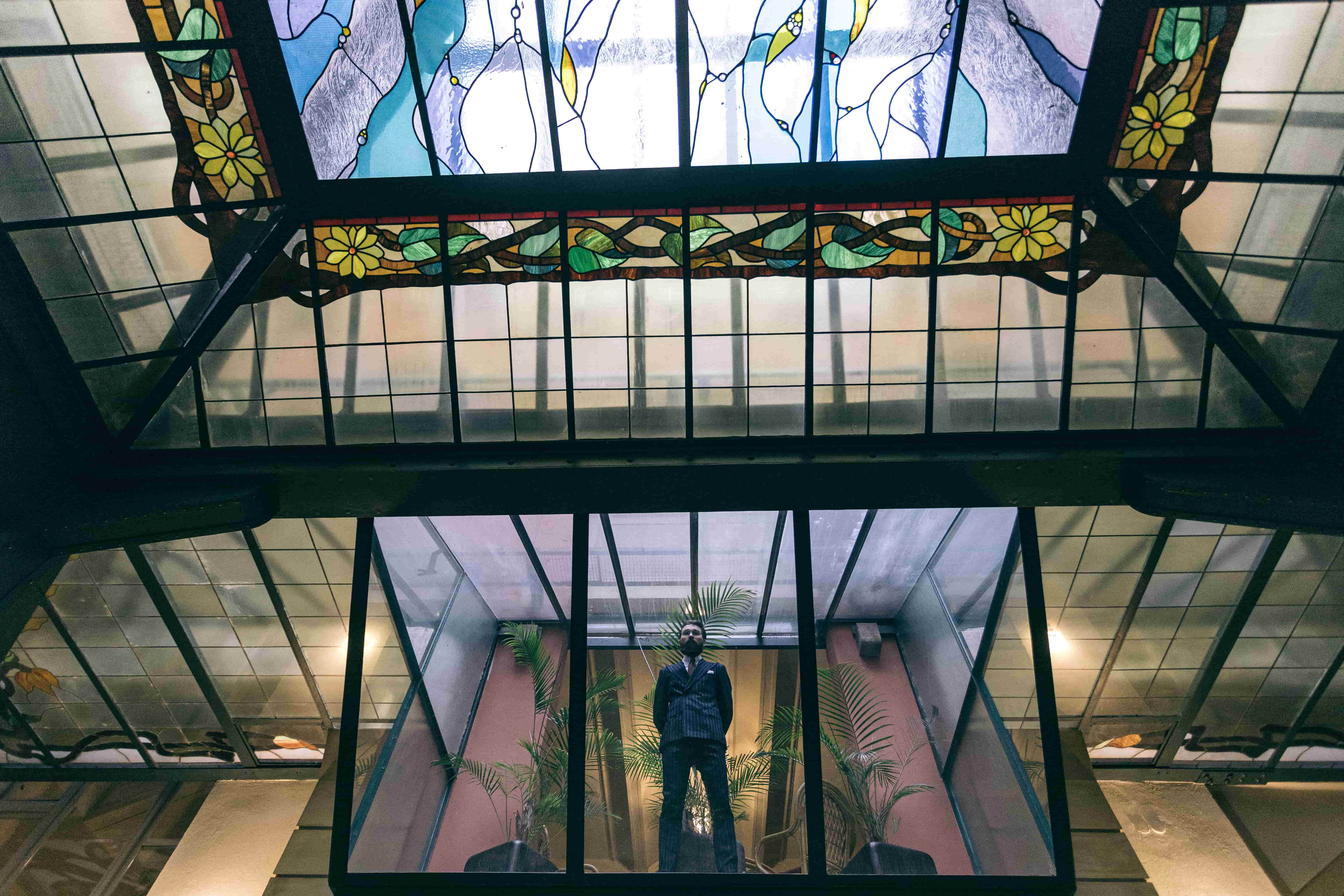Power suit before the Wall Street
2021-12-16

There
are certain stylistic solutions that affect our imagination in unique
ways. Whether we want it or not, our brain affiliates certain things
with contexts, movie stills, connotations. I mention it because I think
that the so called power suit has a very special place in our minds.
There
is one more topic that this photoshoot brushes with. Old money. The
term is used for families, more precisely their fortunes, inherited from
generation to generation. Especially when it comes to USA, which thanks
to it's young history (as countries go) and specific social structure
lacks an aristocracy in the European sense of the word. Fortunes built
upon oil exploitation, gold mining, factory management and railroad
business all begin during the XVIII century latest, often in XIX. To
understand better what kind of fortunes we're talking about, it's best
to remember a few names; Du Pont, Cabot, Forbes or Astor. Rings a bell?
It should. The hotel owners and trade tycoons of yonder were often
portrayed in striped suit. It was the spirit of magnitude of these
fortunes that floated like a cloud above the dreams of prohibition era
Chicago gangsters and 80's New York finance brokers. The emodiment of
all that is the power suit.

There is no good article without a bit of fun trivia, and here it goes. It is said that in victorian England you could differentiate what bank was the person working for by judging the distance the stripes on the suit were separated by. A small trick to differentiate between bankers.
It's interesting just how exactly does the term "power suit" functions in polish and english language. While doing my research I was quite amazed that the search in polish almost always showed me an unanimously striped suit culturally affiliated with people working at Wall Street. The english ones however show the power suit as a ladies garment first. It's supposed to show the visual strength (strong shoulder pads ) of the woman and her position as much as the men's version. Similar to it's counterpart it functions mostly in the worlds of finance and business. It does have it's own iconic representation in the form of a film appearance. In this case it's Tess played by Melanie Griffith in the "Working Girl" 1988 movie. Did the polish enthusiasts of elegance adapt the term separating it from the much more popular version of the power suit for women? Might be. Did they make a distinctively local - polish thing out of it? I don't think so, they just focused on the things that interest them more. Most of you probably don't know this, but it was the polish bloggers who "invented" the wedding outfit comprised of a navy peak lapel suit and a gray PoW check waistcoat.
Something along the lines of primitive morning dress. You can't really find something like that at western wedding settings (if at all).
Getting back on the track to the old money, the photoshoot location was not accidental - it was the interior of the building that functioned as the Municipal Bank in the XIX century. Old money is a conservative approach to life, upbringing, clothing, what should and shouldn't be.
It's interesting just how exactly does the term "power suit" functions in polish and english language. While doing my research I was quite amazed that the search in polish almost always showed me an unanimously striped suit culturally affiliated with people working at Wall Street. The english ones however show the power suit as a ladies garment first. It's supposed to show the visual strength (strong shoulder pads ) of the woman and her position as much as the men's version. Similar to it's counterpart it functions mostly in the worlds of finance and business. It does have it's own iconic representation in the form of a film appearance. In this case it's Tess played by Melanie Griffith in the "Working Girl" 1988 movie. Did the polish enthusiasts of elegance adapt the term separating it from the much more popular version of the power suit for women? Might be. Did they make a distinctively local - polish thing out of it? I don't think so, they just focused on the things that interest them more. Most of you probably don't know this, but it was the polish bloggers who "invented" the wedding outfit comprised of a navy peak lapel suit and a gray PoW check waistcoat.
Something along the lines of primitive morning dress. You can't really find something like that at western wedding settings (if at all).
Getting back on the track to the old money, the photoshoot location was not accidental - it was the interior of the building that functioned as the Municipal Bank in the XIX century. Old money is a conservative approach to life, upbringing, clothing, what should and shouldn't be.

That's why in
this tradition echoing look, I've included everything to make the spirit
of the times and it's society palpable. A pin collar shirt, with a
traditional ancient madder silk tie nestled between the wings, could
only be replaced by a winchester shirt, the one with white cuffs and
collar and the core in different colour. Power suit is one of the few
garments that the winchester shirt fits naturally and perfectly.
Trousers - beltless and outfitted with braces, the particular ones being
sewn from paisley patterned wool, to fit into the XIX and XX century
better. Just to be clear, it's not a reconstruction but a modern
interpretation, and should be treated as such. Can the power suit in
it's most (almost) classic form function in settings other than formal
ones? And how! Even though our culture of clothing sees the suit as a
formal outfit while seeing any other attempts to de-formalize it as odd
or even improper, I think there is nothing wrong to have the flannel
chalk stripe appear in a company of less formal elements. The first step
towards that could be to couple the suit with a thin turtleneck and
loafers (penny or tassel), even the very conservative of sartorialists
can't be too angry at that.


Let's go further, still having America in mind, as she's supposed to be the main background here. The wealthy owner of a big ranch could freely wear the suit over a denim shirt, with patch pockets and all, complimenting it all with cowboy boots. Hard to stomach? Not for me. Not for the ones far over the ocean, as they treat the suit less seriously. Rightly so.


The wild west
isn't really your thing? No matter: Have you ever been enchanted by the
Ivy League style? Fine, let's go that way. Some of the Ivy League
students will inherit vast businesses and huge fortunes, maybe even the
old money. These young representants of old families probably see the
striped suits from the very young age, thus not seeing them as something
unusual or awe inspiring. That's why I'm not perplexed about seeing it
coupled with a rugby shirt and a baseball cap at all. Too much?
Absolutely
not. Clothing and fashion are a form of wearable art. And it should be
interpreted as such. Aren't the paintings of Basquiat harder to
interpret that those of Delacroix? Yet it doesn't make them any less
valuable.


To finish off,
I'd just like to add that the power suit really can show the strength of
the wearer. The strength of character, confidence, and style sense.
Crossing the borders, stepping out of the comfort zone. Doesn't matter
if it's the only "patterned" suit on a business meeting, or worn daily
with a cowboy or a rugby shirt. That's where the strength of this suit
lies today, in it's casual nonchalance. Not in the old money, which the
suit still represents and will continue to do so.


Show more entries from
December 2021
